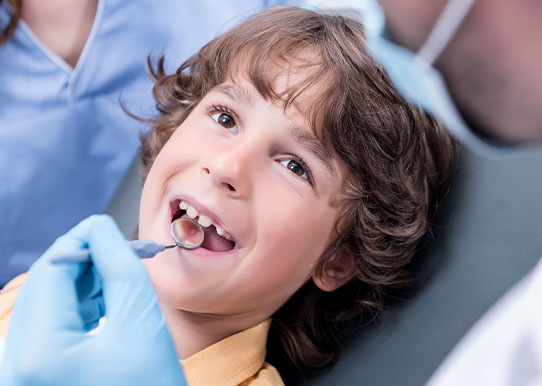
Phase 1 is an early orthodontic treatment that is done before all the permanent teeth have emerged, usually between the ages of six and ten. It helps a child's jaw develop with enough room for future permanent teeth and improves the relationship of the upper and lower jaws. This treatment is only recommended when there is a moderate or severe orthodontic problem that should not wait to be treated and the orthodontist knows they can make a significant difference in their patient’s outcome if they act early.
Since children grow at different rates, the best age for their treatment to begin varies for each child. The American Association of Orthodontists (AAO) recommends that a child’s first visit to an orthodontist should take place when an orthodontic problem is first detected. In all cases, the AAO recommends that every child visit an orthodontist by age 7. An early evaluation allows the orthodontist to determine how and when a child’s particular problems should be treated for maximum improvement with the least amount of time and expense. An early evaluation is important, especially if it is determined that your child needs Phase 1 Treatment. Phase 1 should be started before the face and jaws finish growing, as certain results can become unattainable after this point. Phase 1 Treatment is considered "interceptive treatment." Jaw discrepancies that are recognized with an early evaluation can be treated with this method using specific appliances to make adequate room for a patient’s permanent teeth to emerge.
Phase 1 Treatment ranges from 6-14 months in duration and uses fixed or removable appliances to correct undesirable jaw growth, create space for developing teeth, and/or facilitate facial muscle development. It can take place in one or both jaws and can be used to treat the following:
For those patients who have clear indications of needing early intervention, Phase 1 Treatment can benefit them greatly. It presents the opportunity to do the following:
After Phase 1 treatment is completed, all appliances are removed. Patients are then placed on "observation recall," during which we monitor the eruption of the permanent teeth every four to six months. Retainers may be recommended during this observation period. Approximately 10% of patients who have undergone Phase 1 treatment will not need the second phase of orthodontics. However, 90% of Phase 1 patients will eventually benefit from Phase 2 treatment, utilizing braces or Invisalign to finalize the bite correction.

The best way to learn what orthodontic treatment could do for you or your child is to schedule a complimentary initial exam. We will determine the best course of treatment and answer all your questions. Book your initial appointment online now using the link below, or just simply call our office.
Schedule COnsultation